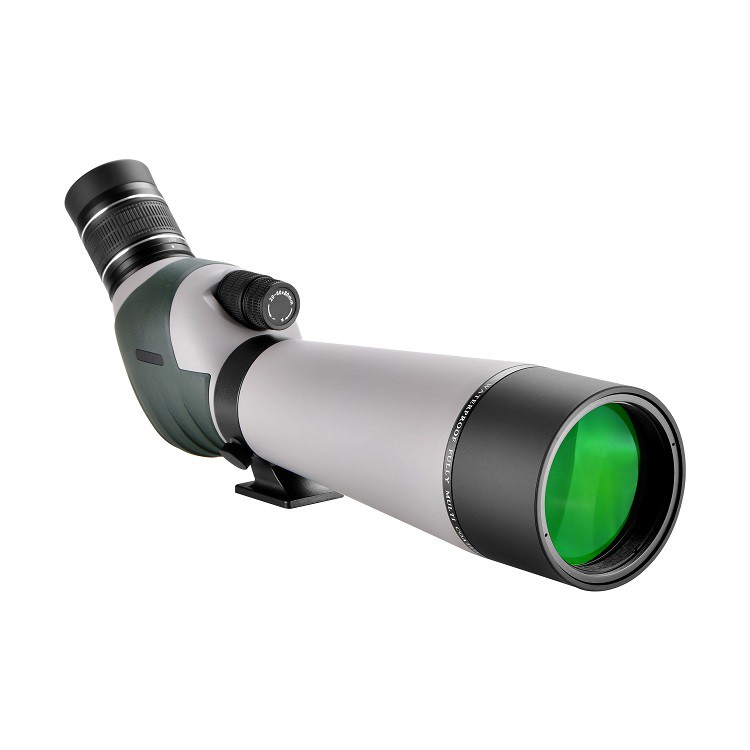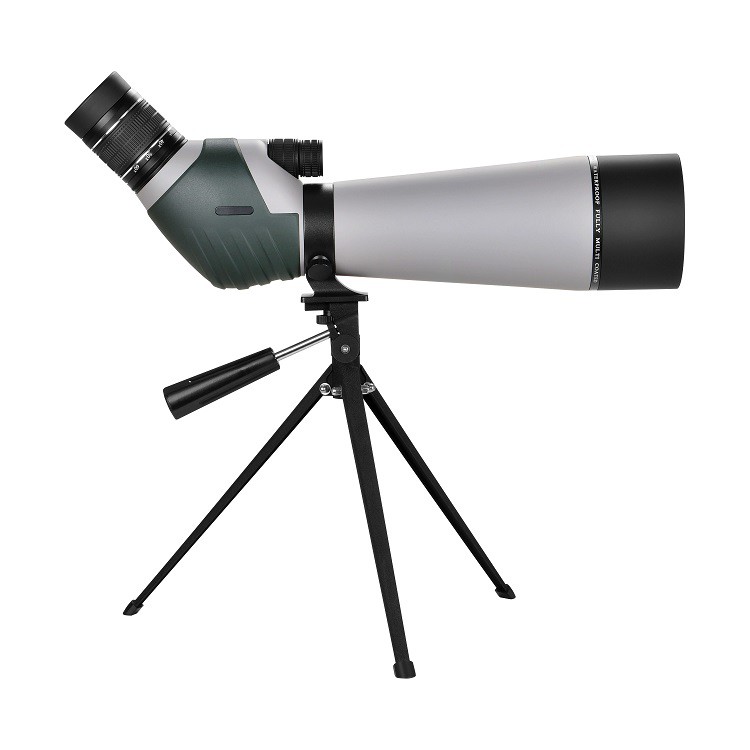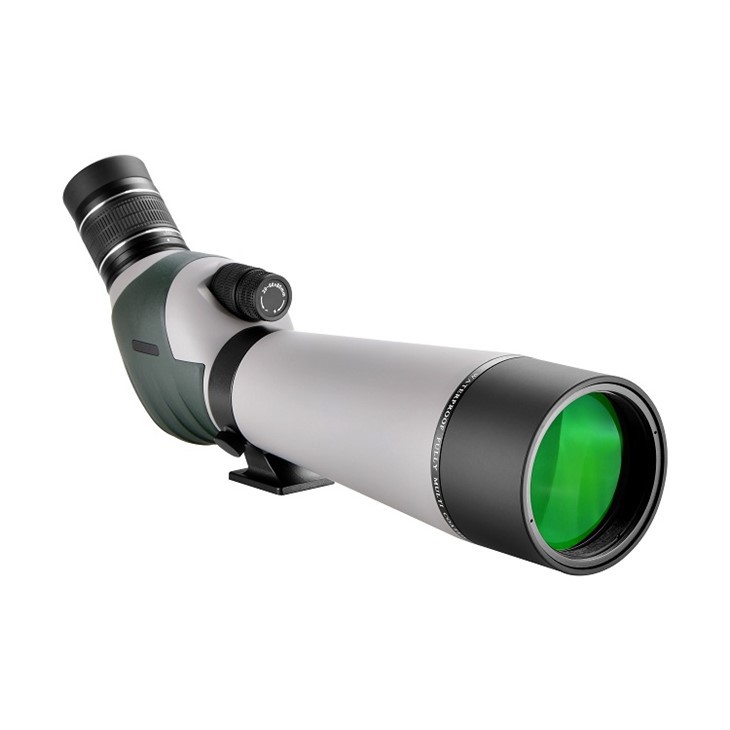Specification
|
Model |
20-60X80 |
|
Magnification |
20-60X |
|
Objective Diameter(mm) |
80mm |
|
Type of Prism |
BAK4 |
|
Lens Coating |
FMC |
|
Focus System |
Center |
|
Exit Pupil Diameter(mm) |
2.6-1.7mm |
|
Exit Pupil Distance(mm) |
18-14.5mm |
|
Angle of View |
3.15-1.56° |
|
Field of View |
165.2–81.8ft/1000yds, 55.1-27.3m/1000m |
|
Close Focus |
6m |
|
Waterproof |
Yes |
|
Nitrogen Filled |
Yes |
Why do we choose 20 60 x 80 Spotting Scope ?
1.Variable Magnification Range:
The 20-60x magnification range allows for versatile viewing options. You can start with a wider field of view at lower magnifications (e.g., 20x) to locate your target and then zoom in for detailed observations at higher magnifications (e.g., 60x). This flexibility is particularly useful for activities like birdwatching or spotting distant objects.
2.Large Objective Lens Diameter: The 80mm objective lens diameter allows the spotting scope to gather more light, resulting in brighter and clearer images, especially in low-light conditions. This is beneficial when observing wildlife early in the morning or during twilight hours.
3.Enhanced Detail and Clarity:
The combination of high magnification and a large objective lens diameter can provide greater detail and clarity in your observations. This is particularly advantageous when studying intricate features of objects or when identifying smaller or distant subjects.
4.Long-Distance Viewing:
With the higher magnification range, you can observe objects or wildlife that are located at a considerable distance. This makes the 20-60x80 spotting scope suitable for activities like long-range nature observation, surveillance, or target shooting.
How to choose 20 60 X 80 Spotting Scope ?
1.Image Quality Across the Magnification Range:
Consider how well the spotting scope maintains image quality throughout its magnification range. Some scopes may exhibit reduced image clarity or distortion at higher magnifications. Look for scopes that maintain good image quality across the entire zoom range.
2.Prism Type:
Spotting scopes commonly use two types of prisms: Porro prisms and roof prisms. Porro prisms tend to offer a wider field of view and can be more affordable, while roof prisms are more compact and often offer better waterproofing and durability. Choose the prism type that aligns with your priorities.
3.Field of View at Different Magnifications:
Check the field of view (FOV) at different magnification levels. A wider FOV allows you to observe a larger area, which can be useful for tracking moving subjects or scanning landscapes quickly. However, bear in mind that the FOV typically decreases as you increase the magnification.
4.Eye Relief:
If you wear glasses, choose a spotting scope with sufficient eye relief to comfortably view the entire field of view without removing your glasses. Look for scopes with long eye relief to accommodate eyeglass wearers.




Hot Tags: 20 60 x 80 spotting scope, China 20 60 x 80 spotting scope manufacturers, suppliers, factory, Handheld Digital Magnifier, Headband Magnifier with Led Light, Astronomical Telescope, Desk Magnifier with Led Lighting, Stereo Binocular Microscope, Lighted Magnifying Glasses Headset















